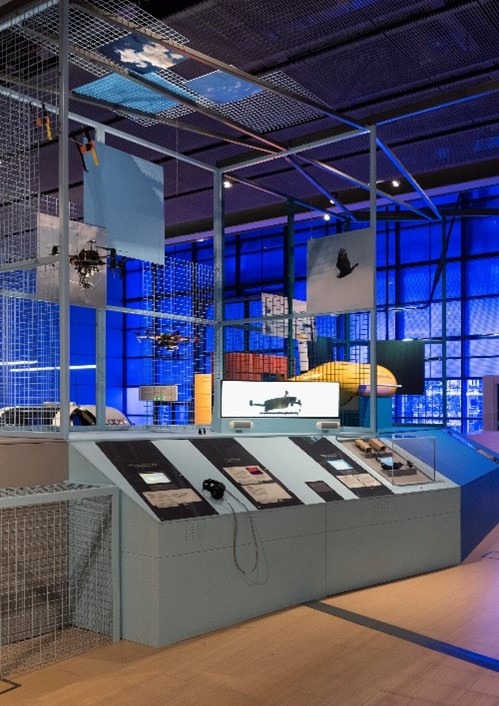In a few weeks’ time, world leaders will gather in Glasgow for COP26 – the United Nations Climate Change Conference. With sustainability increasingly at the front of our minds, many people and organisations are trying to reduce their greenhouse gas emissions.
We have committed to reaching Net Zero by 2033. As part of this goal, we are looking how we produce temporary exhibitions and the changes we can make to reduce our environmental impact.
Showcasing science from around the world
Science is a global endeavour and so we often display technologies and objects from all over the world to show important scientific developments.
In Our Future Planet, an exhibition about carbon capture technology at the Science Museum, we feature several UK-based scientific projects. However there were some important objects that had to travel further.
Our team of registrars are responsible for arranging the transport of objects to and from the museum. In the case of Our Future Planet, this included the first prototype of a carbon capture machine – Klaus Lackner’s mechanical tree, which was developed at the University of Arizona in Phoenix in the United States. To bring it to our visitors, we had to balance considerations of sustainability with caring for the object itself.

When transporting objects over long distances, using ships rather than planes produces much less carbon dioxide. However, there are other things to consider. For example, if the object has to travel further to get to the seaport than the nearest airport, there will be additional emissions from the truck used to transport it.
There is also the temperature and fragility of the object to think about. After years in the Arizona desert, putting the mechanical tree on a ship, where temperatures can fluctuate wildly, means the shipping container would need to be climate controlled for the entire journey of many months.
On this occasion we decided it was better for the object to move it by air. We continue to assess objects which need to travel long distances on a case-by-case basis, aiming to transport them as sustainably as possible.
The greenest building is the one that already exists
The space where Our Future Planet is on display hosts a new exhibition every 12-18 months. Each time we change the exhibition, we change the space. Objects need different sized showcases and new walls or plinths may be needed to show objects in a logical order.
However, we try to minimise waste and reuse different elements wherever possible. The previous exhibition in this space was Driverless: Who is in control? which explored the science behind driverless cars and other autonomous vehicles.
The look and feel of both exhibitions is quite different, but on closer inspection you can see where we have reused components to minimise the use of new materials.
For Driverless we built a large metal frame to display drones. In Our Future Planet we used this same metalwork to frame a montage of images and video footage of different forests.
Almost all the showcases and audio-visual equipment in Our Future Planet was reused from previous exhibitions and, when it comes to removing the exhibition, we will reuse as much as we can for future exhibitions and recycle materials where they can’t be reused.
From choosing sustainable and recyclable building materials to sending electronic launch invitations, as we work towards our target of Net Zero we are looking at every aspect of how we develop exhibitions to reduce emissions and work more sustainably.

